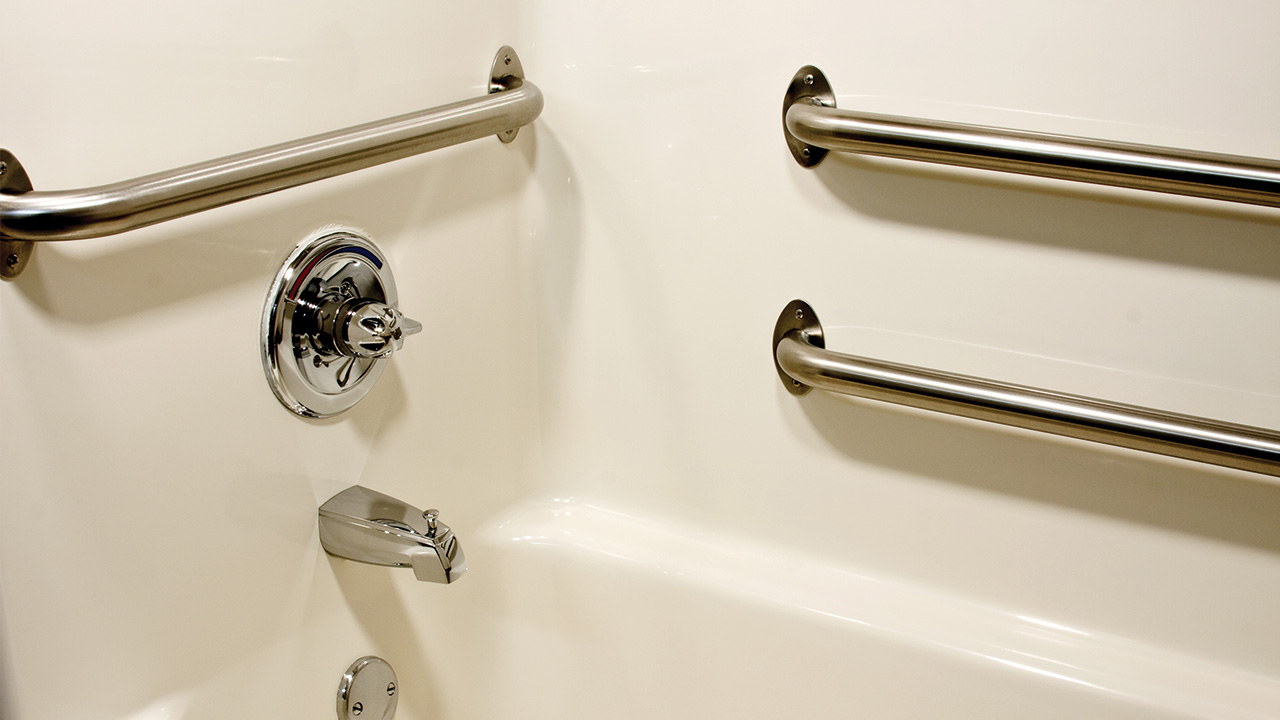Grab bars are one of the simplest and most affordable home modifications one can make, and they are a must-have for anyone who wishes to age in place. Bathrooms are a high-risk area when it comes to falls. When installed properly, grab bars can provide seniors with added stability and increased safety while toileting and bathing.
In terms of height, there is generally no mandated height requirement for grab bars, but the Americans with Disabilities Act (ADA) Standards for Accessible Design do provide excellent guidelines for installation. These are the standards that commercial facilities, government facilities and public accommodations must use to ensure universal accessibility for all patrons.
For horizontal grab bars, the ADA Standards require a height between 33 and 36 inches from the finished floor of the bathroom, shower or tub. It is helpful to use this range as a guide for placement, but the most important part is selecting a height that feels comfortable and secure for the person using them. For example, a petite woman may benefit from bars that are placed much lower than what a very tall man would find useful. If the bars are not placed in ideal spots, then they are not likely to be used and may even cause more awkwardness and instability.
Bars may also be placed vertically or at an angle. These bars are long enough that they allow greater flexibility when it comes to their installation height. Vertical bars are typically placed at the entrance of a shower or shower/bath combination, while bars installed at an angle are often placed beside permanent shower seats.
Prior to installation, it can be helpful to go through the motions of one’s bathroom routine to see where one naturally reaches for extra support. This is especially important in transfer situations, such as sitting down and rising from the toilet and shower seat, entering and exiting the shower or tub, and going from sitting to standing in the tub. Even if a person is physically capable of executing their routine without any assistance, completing this exercise as if one is feeling tired, weak or dizzy can yield useful results. Another option is working with an occupational therapist (OT), who can conduct an assessment and develop a personalized plan for home modifications that improve both safety and functionality.
